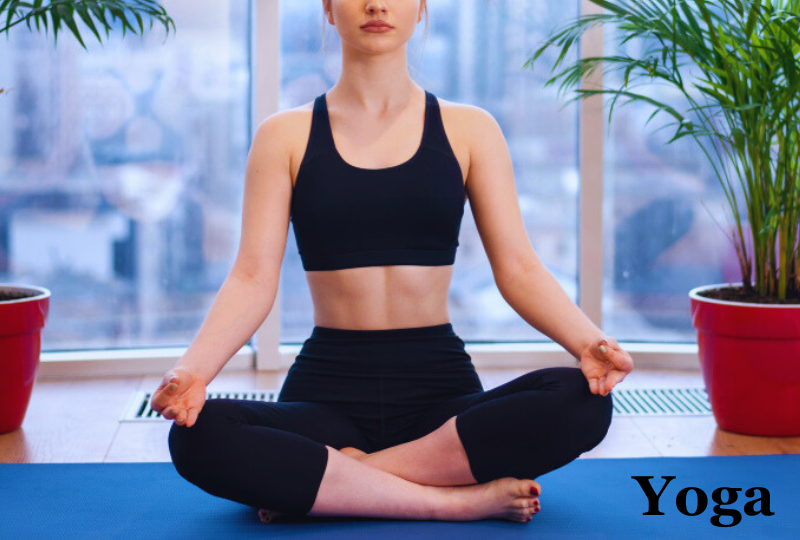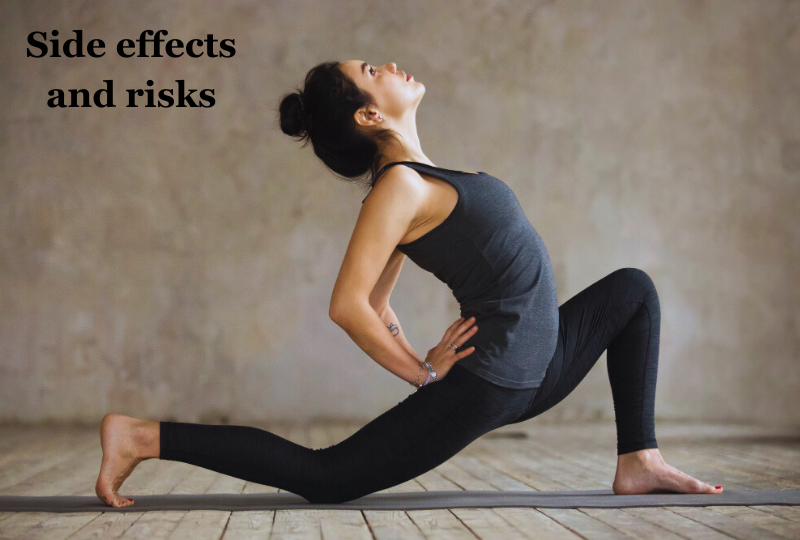
Yoga: A Comprehensive Strategy for Well-Being
Yoga is a centuries-old discipline that has spread throughout the world. Its origins are in prehistoric India. This piece will examine the diverse realm of it, examining its different forms, advantages for mental and physical well-being, and useful advice for incorporating it into everyday routines.
The Diverse Aspects of Yoga
An Overview
It is originated from spiritual and philosophical teachings thousands of years ago. It has developed into a holistic discipline that incorporates ethical precepts, physical postures, breath control, and meditation nowadays. The widespread adoption of it is indicative of its attraction to all people, as it promotes mental and physical health.
Define Yoga
It is an age-old discipline that calls for physical postures, focus, and deep breathing. Regular practice can enhance flexibility, strength, tranquility, endurance, and general well-being.
Nowadays, It is a well-liked kind of physical activity worldwide. A 2017 nationwide study found that 1 in 7 American adults have done it over the previous 12 months.
Starbucks Partner Hours: Handling Work-Life Harmony in the Coffee Culture
Types
Strength, flexibility, exercise, and breathing are the main goals of modern yoga. There are numerous styles. A person’s fitness level and goals should guide their style choice.
Some forms and styles are as follows:
Ashtanga Yoga
The ancient yoga principles are applied in this style of practice. That did, however, gain popularity in the 1970s. Ashtanga uses the same postures and flow sequences that quickly connect each stance to the breath.
Bikram Yoga
Hot or Bikram yoga, is practiced in specially heated rooms with an approximate temperature of 105 degrees Fahrenheit and 40% humidity. There are two breathing exercises and a total of 26 poses in this series.
Hatha Yoga
This umbrella phrase refers to all forms of it that instruct physical postures. Generally speaking, hatha sessions offer a gradual introduction to the fundamental yoga positions.
Lyengar Yoga
This style of yoga focuses on using a variety of props, including chairs, bolsters, blankets, blocks, and straps, to assist practitioners find the proper alignment in each posture.
Power yoga
Based on the conventional Ashtanga method, practitioners created this athletic and dynamic style of yoga in the late 1980s.
Sivananda
The core of this method is a five point concept.
According to this idea, leading a healthy yogic lifestyle can be achieved by appropriate breathing, relaxation, food, exercise, and positive thought.
Sivananda practitioners perform 12 basic asanas, starting with Sun Salutations and ending with Savasana.
Viniyoga
Form over function, breath and adaptability, holding and repeating, and the art and science of sequencing are the main points of emphasis in viniyoga.
Yoga Yin
The emphasis of yin yoga is on maintaining passive positions for extended periods of time. Deep tissues, ligaments, joints, bones, and fascia are all targeted by this type of yoga.
Prenatal
Prenatal yoga incorporates poses that have been specifically designed with expectant mothers in mind. This type of yoga can promote health throughout pregnancy and assist individuals in getting back into shape after giving birth.
Restorative
This is a calming yoga technique. During a restorative class, an individual practices four or five basic poses, using props like blankets and bolsters to help them sink into deep relaxation without having to work to hold the pose.
Advantages
A 2012 survey found that 94% of adult yoga practitioners do so for health-related purposes.
Numerous mental and physical advantages include:
- Increasing muscular mass and improving range of motion
- Encouraging improved breathing
- Promoting cardiac health
- Aiding in the recovery of addiction
- Lowering chronic pain, stress, anxiety, and depression
- Increasing sleep Quality of life and general well-being
It is best to speak with a doctor before beginning a yoga practice, if at all possible.
Balanced Life with Yoga
Physical Health
It offers many physical advantages, including improved strength and flexibility as well as help with weight management. It is suitable for people of all fitness levels due to its mild yet powerful nature.
Mental Wellness
In our hectic lives, mental health is critical. It offers a haven for reduced stress, anxiety, sharper focus, and deeper sleep. It’s mindful stance promotes a healthy relationship between the body and mind.
Yoga and Enlightenment
Yoga has profound spiritual roots in addition to its physical and mental aspects. By encouraging people to connect with their inner selves, the practice promotes inner tranquility and peace. A key element of it, meditation facilitates this spiritual journey.
Suitable for Various Age Groups
Yoga is age-appropriate and accessible to all. Customized regimens are available for kids, adults, and senior citizens, making it an adaptable activity for people of all ages.
Including Yoga in Daily Living
In Everyday Life
Yoga’s ease of use and ability to fit into regular schedules are its greatest qualities. It is possible to fit brief yoga sessions into hectic schedules, so even the busiest people can benefit from it.
Frequently Held Myths
As yoga becomes more popular, myths and prejudices about it also surface. Fostering a true understanding of this age-old practice requires busting myths and correcting misconceptions.
Yoga and Technology
Technology has made it more accessible than ever in the digital age. People can practice it from the comfort of their homes with the help of virtual resources, yoga apps, and online classes.
Communities and Yoga Retreats
It retreats and communities offer an immersive experience for those looking to connect with like-minded people and develop their practice. Creating a community that is encouraging improves it as a whole.
Conversations with a Specialist
Learning from an experienced practitioner provides beginners and seasoned practitioners with helpful viewpoints and advice. The counsel of an expert can direct practitioners on their path to mastery.

Side effects and risks
Many forms of it are safe for people to practice when led by a qualified instructor because they are generally mild.
It is uncommon for practicing yoga to result in a serious injury. Injuries that occur most frequently to it practitioners are sprains and strains.
Nonetheless, before beginning a practice, people might want to take into account a few risk factors.
It is advisable for someone who is pregnant or suffers from a chronic illness like sciatica, glaucoma, or bone loss to speak with a healthcare provider before beginning it.
Depending on their particular condition, some people might need to modify or avoid certain poses that could be dangerous.
Advanced poses and challenging techniques, like headstands, lotus poses, and forceful breathing, are not recommended for beginners.
People should not substitute for traditional medical care when managing a condition, nor should they put off visiting a healthcare provider for treatment of pain or any other medical issue.
Summary
In summary, It is a holistic approach to wellness rather than just a physical workout. It is a beneficial practice for people from all walks of life due to its significant effects on spirituality, mental health, and physical health. The advantages of it are available to all practitioners, regardless of skill level.
Answers to Common Questions
Are beginners able to practice it?
Of course! With their gentle poses and simple routines, many yoga styles are suitable for beginners.
How frequently ought I to do yoga?
It practice frequency is determined by personal schedules and preferences. It’s a good idea to start with a few sessions per week.
Is it beneficial for reducing stress?
Yes, Yoga is well known for its ability to reduce stress. Moving your body and practicing mindfulness both help to promote mental calmness.
Are there any age limits on practice?
No, It is appropriate for people of all ages. There are customized regimens for adults, seniors, and children.
When is the ideal time to do it?
Each person has a different ideal time of day to practice it. Evenings are more soothing to some, while mornings are preferred by others for a fresh start.






Laboris eum expedita modi consequatur temporibus omnis velit nihil iusto consequatur in quod inventore dolore lorem